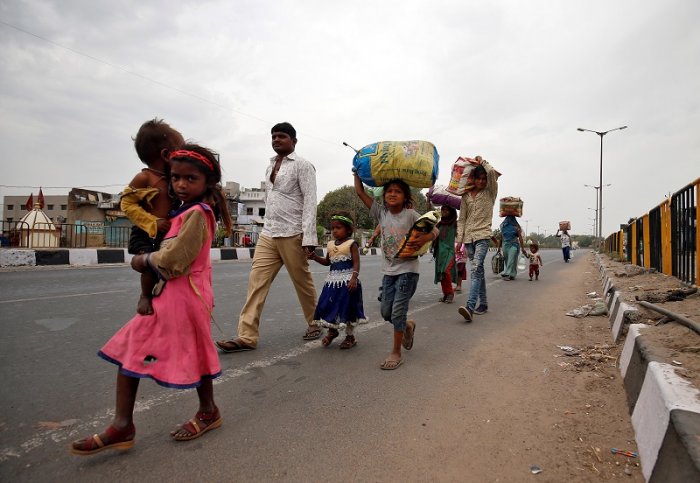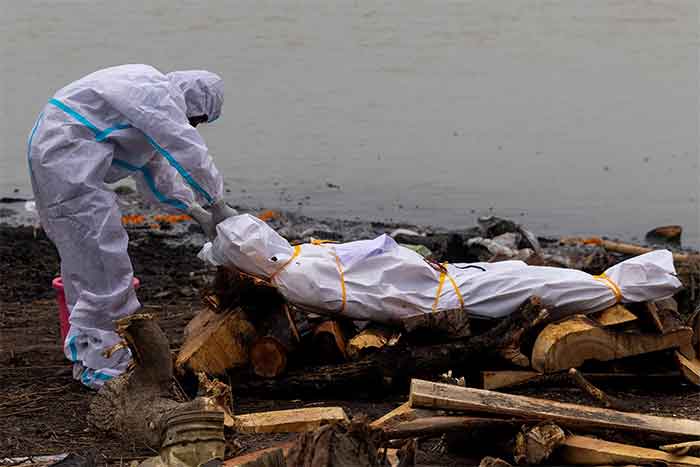
A farrago of failures of the authorities is confounding India’s desperate struggle against the coronavirus disease (Covid-19), as the nation is facing a prolonged lockdown. As public services collapsed with the abrupt imposition of the world’s biggest – and toughest – lockdown that quarantined the population of 1.3 billion from 25 March, there are fears that the unfolding humanitarian tragedy will far eclipse the viral disaster that has hitherto slain 324 and afflicted 9,352 others in the country.
There was widespread panic when Prime Minister Narendra Modi came on television at 8 pm on 24 March to announce that the 21-day lockdown would begin that midnight, in four hours. Binge purchases stripped bare supermarkets, groceries and pharmacies in no time.
Also, with 93 per cent of the country’s 540-million workforce engaged in the informal sector with no social security and comprising largely migrant workers who are daily wagers, roadside vendors, servants, drivers and contract labourers, there was a mass exodus from the towns and cities where they worked, to their families back in rural India.
Out of job, and with meagre savings – they remit most of their earnings to their families – and with public transport revoked, most were left with no option but to trudge the vast distances, even 400 km and more, to their hometowns. They were, however, turned upon by the police who thrashed and humiliated them for venturing out. At least 17 of them died soon after while dodging police brutality in making their way home. One man was midway from his village 200 km away when he collapsed out of exhaustion, but was left to die in the streets by unconcerned policemen. One 11-year-old boy died of starvation. Groups of four and five workers were separately mowed down by speeding vans.
In a radio broadcast on 29 March, the Prime Minister apologised for the grim developments and said he understood what the poor were going through. However, the next day, state borders were sealed off, stranding those fleeing even further, without food, water or shelter.
Millions of them have started starving, even as some public-spirited individuals and organisations bribe the police for permission to distribute food where they can. Some of those in flight were lined up by officials posted at state borders and fumigated from head to foot with chemicals and then pushed back across the borders without food, water or rest. One lost an eye as a result. Some of them proudly proclaimed they were skilled cooks whose food was savoured by those patronising their eateries, but were now themselves suffering pangs of hunger.
The situation is little better in urban India. Though essential services like food and medicine have been exempt from the shutdown, roadside vegetable and fruit vendors have been chased away, their pushcarts upturned and their wares squashed by policemen on the rampage. Trucks freighting fruits and vegetables have been stopped by police seeking bribes to let them through, with catastrophic consequences. Truckloads of food items are thus rotting away, farmers too are suffering as their produce is not being picked up in time, and retail outlets are running low on stores. Most online retailers have ceased operations.
Curiously, the country has enough food reserves – including 59 million tonnes (mt) of foodgrain – to feed the population for the next one year, but these are not being released to tide over the on-going crisis.
The crisis of the poor exacerbates India’s struggle against the coronavirus. Two-thirds of the population lives on less than $2 a day and they have been the worst affected by the closure. The situation threatens to precipitate a manmade famine that will devastate especially these segments on the margins of society.
India’s first active case of Covid-19 was carried into the country on 30 January from China where it was first detected over a month earlier. But though the World Health Organisation (WHO) that very day declared the outbreak a ‘public health emergency of international concern’ and on 11 March designated it a ‘pandemic’, counselling a vigorous global response to counter it, India’s health ministry officials even on 13 March were telling reporters that coronavirus is “not a health emergency” and “there is no need to panic”.
The government’s attention was diverted by other issues. For instance, the entire administration was focussed on preparations for US President Donald Trump’s 36-hour state visit to the country in the last week of February, reportedly spending $17 million just for his three-hour sojourn in Ahmedabad, in Gujarat state. Besides, the nationwide unrest, provoked by the enactment of a communally discriminatory legislation, peaked while Trump was in the capital city of New Delhi, leading the authorities to counter it forcefully.
Opposition parties also alleged that the Modi government had delayed imposing the lockdown as it was devoting its energies in much of March towards horse-trading to pull down the Congress party-led government in the politically significant state of Madhya Pradesh and replacing it with that led by Modi’s Bharatiya Janata Party (BJP).
Healthcare workers were besides alarmed by critical medical supplies running low. Even in the best of times, the country’s feeble health services are stretched, there being an average of only 0.6 beds per 1,000 population and one doctor for every 1,457 people, these dismal ratios plummeting in rural India. While the government budgets 2.1 per cent of the GDP towards Defence, the share of Public Health is a mere 0.44 per cent. Testing for the virus has remained weak, reaching a total 195,748 on Sunday.
Yet, India has been exporting planeloads of life-saving drugs to various countries in what is widely seen as an effort at “medical diplomacy”. The government retracted a ban it had itself briefly imposed on such drugs on 19 March, including the experimental Covid-19 treatment, hydroxychloroquine (HCQ), after Trump threatened retaliation if the anti-malarial medicine was not shipped to the US. While authorities insist there is no domestic shortage of HCQ, pharmacists say it has almost disappeared from the market.
Earlier, India had airlifted 15 tonnes of medical supplies by an air force plane to coronavirus-hit China that included surgical masks and gloves, infusion pumps, enteral feeding pumps and defibrillators. Drug consignments are also being sent to other afflicted countries like the UK, Spain, Germany, Mauritius, Seychelles and Bahrain.
Seized of the viral dilemma, the Prime Minister now says that his previous slogan on the pandemic, namely, Jaan hai to jahaan hai (if there is life, the world will exist) must be changed to Jaan bhi, jahaan bhi (life will be there, together with the world).
Sarosh Bana is the Editor of Business India
SIGN UP FOR COUNTERCURRENTS DAILY NEWS LETTER
















































